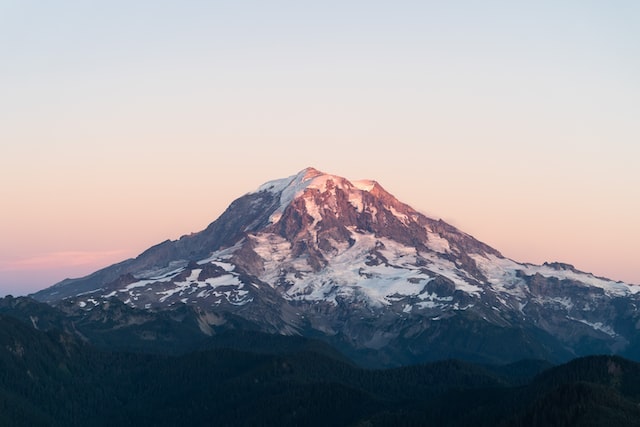A warming climate has claimed three more glaciers in Washington state. All three were on Mount Rainier, which is home to more ice than any U.S. mountain south of Alaska.
Scientists with the National Park Service say that Stevens Glacier was gone as of 2021.
Glaciologist Mauri Pelto looked at satellite imagery from last fall and says that he found that two other glaciers had dwindled down to ice patches, too small to be considered glaciers anymore.
“As we continue to have these warm summers and these heat waves, all the glaciers are going to really suffer, and any glacier that’s not in pretty good form is going to be lost," Pelto says.
Park service researchers say Rainier has lost half its ice since the start of the 20th Century. The losses have accelerated in recent years.
Pelto also notes that it’s too late to save the Northwest’s smaller glaciers, given the warming already baked into the climate by human pollution. But he says it’s not too late to slow global warming enough to save the Northwest’s bigger glaciers.
–Emphasis added–
Submission comment: I believe scientists error on the side of optimism for many reasons, and I believe one of those reasons is because environmental systems are so complex, even the most informed are ignorant of the true consequences the globe will experience thanks to the massive influence of humanity.
When we experience “accelerating losses” and it is already “too late” to save resources we depend on for survival, I think it is wishful thinking that even bold actions could prevent the loss of the bigger glaciers.



Something that keeps me up at night: climate change means that larges masses are also moving (ice melts and the water travels elsewhere). All this redistribution of mass is known to have an impact on earthquakes and volcanoes. While it appears that recent science has not directly made the correlation of large earthquakes with climate change, we are still only now starting to see the larger results of our actions. More, and larger climate impacts are already baked in, and we continue to add greenhouse gases.
This is all more relevant for those that live in areas with active volcanoes and plate tectonics such as the Pacific Northwest. Home of Mt Rainier and its diminishing ice…
https://www.pbs.org/wnet/peril-and-promise/2022/09/how-climate-change-impacts-each-type-of-natural-disaster/
https://climate.nasa.gov/news/2926/can-climate-affect-earthquakes-or-are-the-connections-shaky/